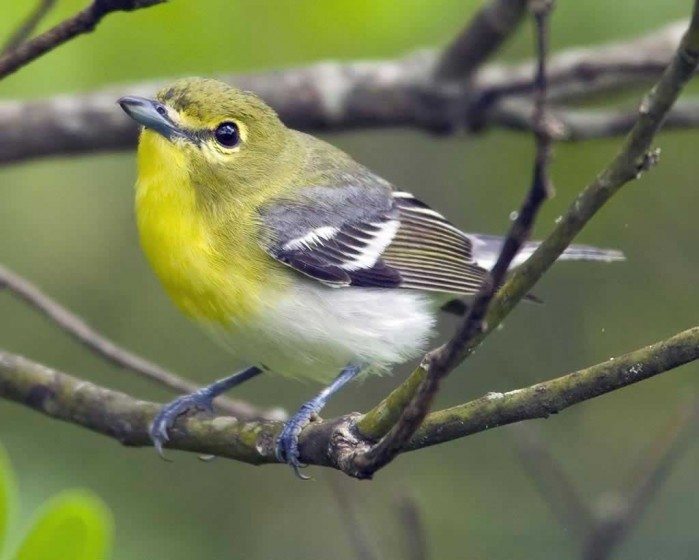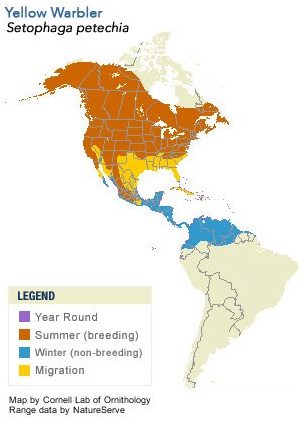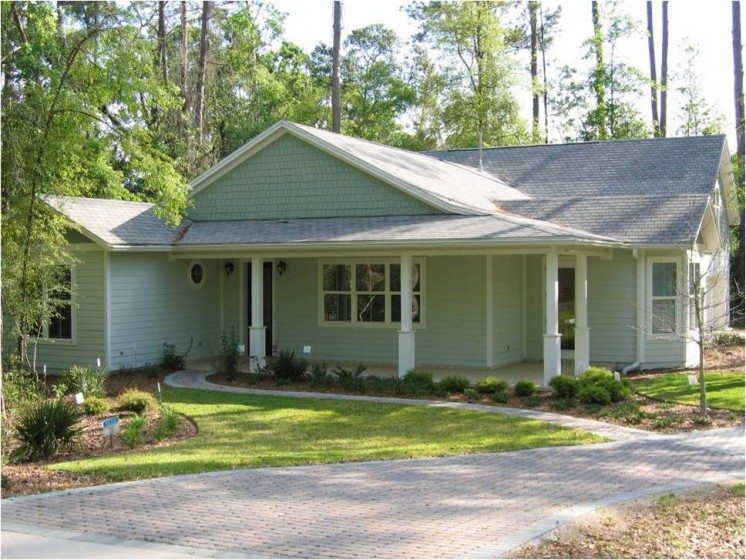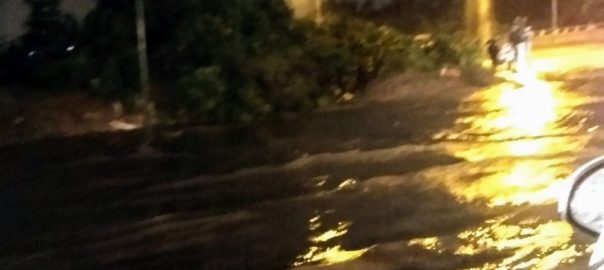For many developers and city planners, it takes time and money to plan around trees and small forest fragments. Often, the message from conservationists is that we want to avoid fragmentation and to conserve large forested areas. While this goal is important, the message tends to negate any thoughts by developers towards conserving individual mature trees and small forest fragments.
To design around individual trees and small forest fragments, it takes a good deal of planning and, in some cases, extra costs. Roads have to be realigned, homes on lots have to be sited to protect trees, and a considerable amount of construction management has to be implemented to prevent earthwork machines from damaging conserved trees and forest areas. From an engineering/construction perspective, it is sometimes easier to wipe out all vegetation and start from scratch. So why should trees and forest fragments be conserved? Below, I discuss a few ecological and environmental reasons.

Benefits for migrating birds
Long-distance Migrants
In and around urban areas, forest fragments could be used by an important group of long-distance migrants called Neotropical birds (Figure 1). These birds typically breed during the summer in the U.S. and Canada and they migrate south to spend the winter months in Mexico, the Caribbean islands, Central America, and South America (Figure 2). Migrating species make the return trip in the spring back to their breeding grounds. Along the migration route, forest fragments in urban areas can serve as stopover sites where migrants rest and forage for food. These stopover sites are critical, as the birds need to rest and forage in these sites in order to make their long journeys.


On their breeding grounds, a few Neotropical migrants use forest edges and open woodlands and are not very sensitive to forest fragmentation (e.g., Baltimore Oriole, Icterus galbula). However, many Neotropical migrants are sensitive to fragmentation (e.g., Cerulean warbler, Setophaga cerulea) and typically only breed successfully in large patches of forest (e.g., greater than 100 acres). Birds that primarily breed in large forest patches are called interior forest specialists. It is hypothesized that these species are vulnerable in fragmented landscapes because they are area sensitive, typically nest in open-cups on or near the ground, have small clutch sizes, and often do not nest again if a nest fails.

In fragmented landscapes containing agricultural and urban areas, a variety of nest predators and brood parasites are more abundant along the edges of forests. Nest predators include mammals and birds, such as raccoons, cats, skunks, blue jays, and crows. The main brood parasite is the brown-headed cowbird, which lays eggs in a Neotropical migrant’s nest; the parents are tricked into feeding and raising the cowbird chick instead of their own. Cowbirds and nest predators thrive in fragmented forest landscapes containing agriculture fields, pastures, and residential development.
Some interior forest specialists (e.g., Canada Warbler, Cardellina Canadensis) breed in dense understory growth in the openings of large forests and use regenerating vegetation (caused by windfalls, fires, and clearcutting) when nesting. Although they technically breed along edges, they do so in large forested areas, and they are thought to be vulnerable to forest edges found in fragmented landscapes where urban and agricultural areas are nearby. This is because of increased predation and cowbird parasitism in fragmented landscapes containing agriculture and urban areas. Overall, interior forest specialists are vulnerable to forest fragmentation; many populations of these species are declining and are in danger of extinction due to human modifications of the landscape.
Short-distance migrants
Short-distance migrants are birds that breed in the U.S. and Canada and winter in the U.S. Many of these species include populations that are considered both as year-round residents (e.g., they breed and winter in the same area) and short-distance migrants. American Robins (Turdus migratorius ) are one example: a portion of the robin population breeds in Canada and migrates south to the U.S. during the winter. American robins can be seen year round in most states south of Canada, but of these robins, a portion of the population will migrate south during the winter, going across state lines. Florida is one state where robins do not breed but they can be found in Florida during the winter because some robins migrate there.
Sometimes, individuals in the same species can either be short-distance or long-distance migrants. For example, Cedar Waxwings (Bombycilla cedrorum) are Neotropical migrants, with a majority appearing during the winter months in Central America and the Caribbean islands. However, a portion of the population winters in southern states, such as Georgia, Texas, and Florida.
Do migrants use forest fragments and trees as stopover sites?
Through a literature review that my graduate student (Jan Archer) and I conducted, we found that many Neotropical migrants—both interior forest specialists and migrants that breed in small forest patches and open woodlands—use small forest fragments as stopover sites. Thus, small forest fragments may not be appropriate breeding habitat for many interior forest migrant species but these fragments could serve as stopover habitat. Short-distance migrants also use forest fragments as stopover sites. We even found studies that found migrating birds using trees in residential areas. Thus, individual trees and small forest fragments are important features in urban landscapes for migrating birds.
In the literature, we found that a majority of the migrant species were from studies that surveyed in one or several similar-sized, small forest fragments. These studies listed migrant bird species that used these patches during the fall or spring. They did not explicitly compare forest fragments of different sizes. However, a few studies conducted surveys across a range of small forest fragments, and these studies found that relatively larger forest fragments contained more Neotropical migrants. These were still small fragments, but more birds were found in forest fragments from 10 to 17 acres in size when compared to fragments from 1 to 10 acres. Because of these studies, I suggest conserving relatively larger forest fragments when opportunities present themselves.
Carbon and energy benefits
First off, trees and forests sequester and store carbon. Trees perform an important function in the natural carbon cycle, helping to mitigate climate change. Through the process of photosynthesis, trees sequester, or capture, carbon dioxide from the atmosphere to create energy for growth. This carbon is then stored in the tree’s biomass over its lifetime. Trees store carbon in their leaves, branches, trunks, stems, and roots, and their fallen leaves contribute biomass to the soil. In addition to directly limiting carbon emissions by storing carbon, trees can indirectly limit CO2 emissions when they are positioned effectively so that they shade a house. Providing shade and evapotranspiration near homes (see here) reduces building energy needs for cooling, allowing homeowners to avoid unnecessary carbon emissions. Trees shade homes, reducing building temperatures and the amount of sunlight entering homes (Figure 3). In such cases, the air conditioning unit will run less frequently and use less carbon-emitting energy to cool the home (see here).

Not all trees avoid, sequester, or store carbon at the same rate, however. Carbon sequestration rates and avoidance of carbon emissions are based on a tree’s species, age, size, height, crown characteristics, overall health, and its location in the yard. For example, a live oak (Quercus virginiana, Figure 4) will sequester and store more carbon than a magnolia (Magnolia grandiflora) or a loblolly pine (Pinus taeda). A live oak will typically have more biomass than a pine or a magnolia for a number of reasons. First, wood density has a positive relationship with the amount of carbon stored. In general, hardwood tree species, such as oaks, tend to have a denser wood and a more open crown structure than softwood species. Greater wood density equates to greater biomass and, generally, a more open crown structure means more volume and growth and, therefore, higher carbon sequestration.

Summary
Overall, urban trees and forest fragments provide many ecological, environmental, and aesthetic benefits. In particular, the function of stopover sites for migrating species is very interesting and more research is needed to document the ecological benefits of urban trees and forests. I did not review all benefits, for example, how trees control stormwater runoff and improve water quality (see here). The trick is to convey information to developers and environmental consultants that make on-the-ground decisions. As conservationists, we have to be careful about our messages, as they may dissuade decision makers from doing the best that they can.
As mentioned in this essay, fragmented landscapes do have value for a variety of species and only stating that fragmentation is bad can lead to lost conservation opportunities. Providing local, model examples can help promote such communication and best management practices. Also, city policies can create the enabling conditions for urban forest conservation, such as the Urban Design Framework and Green Streets Policy in Melbourne, Australia, and the Tampa, FL Urban Forest Management Plan.
Mark Hostetler
Gainesville












Thanks for helping preserve our urban area’s wildlife!
I absolutely LOVE reading articles like this! We need more programs, and people and opportunities to keep our urban forests protected! The fact that cities keep our ecosystems alive is well worth a mention!
Great info! Thank you for sharing
Great article. I appreciate you adding a link to, “how trees control stormwater runoff and improve water quality.” I am an arborist in charlotte nc and have owned my own tree service company for many years all throughout the US, and have helped my customers many of times develop a water runoff system designed by trees rather than removing trees and developing some other infrastructure to handle the run off. Great information. I am glad I ran into this blog.
Hello All: We now have a Building for Birds Website. The goal of the building for birds online tool is to provide decision makers with a way to evaluate different development scenarios and how they affect habitat for different species of forest birds that can use fragmented areas. This evaluation tool should primarily be used for situations where the development footprint is relatively small and/or occurs in already fragmented landscapes.
Thus, no opportunity is available to conserve large forest areas that are 125 acres or more. Often, when land is subdivided, it costs time and money to conserve forest fragments and to conserve trees in residential/commercial areas, but there is value for many different species of forest birds. Forest fragments and trees conserved in built areas can serve as breeding, wintering, and stopover habitat for a variety of species..
A variety of bird species utilize habitat in and around urban areas. To determine bird habitat scores as a result of different development designs, one simply enters the amount of conserved forest fragments and conserved tree canopy cover in built areas. From these inputs, one can obtain a report for a particular scenario, containing a score for each of the bird habitat categories and a list of birds that could be found in each of these habitats. Go to the tool and follow the 5 steps! http://wec.ifas.ufl.edu/buildingforbirds/web/home.html
Amen, sista!
The ecosystem services mentioned are only a part of a suite of benefits provided by trees and forest remnants. The research keeps fliwing in on human health, physical and mental.Then there are the social benefits such as stronger communities, less crime, improved retention of knowledge and quicker recovery from stress inducing events.
An important point is that early exposure to nearby nature, even in the City, is the source of many environmentalists’ committment to their profession. Where will they come from in the future, and where will people be if we fail to produce them.
Anybody from C. and S. America that have migrants appear in cities?